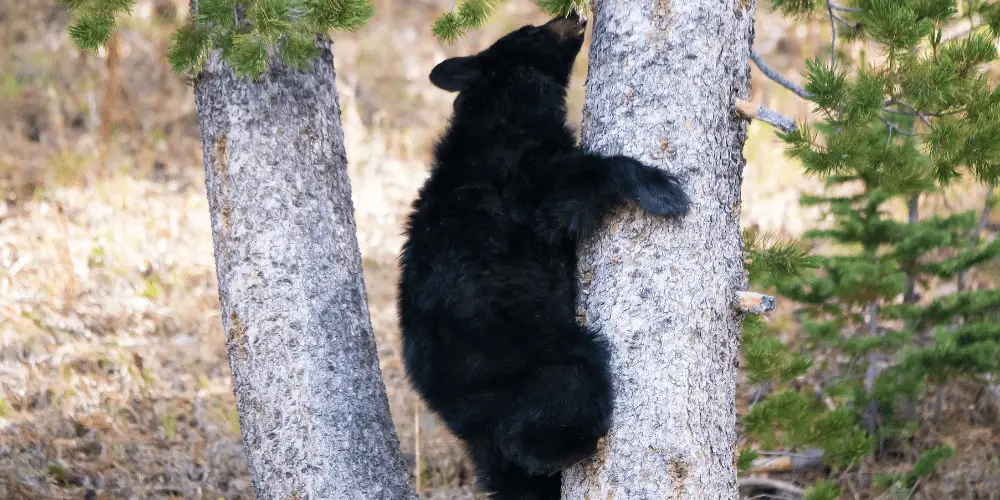If you’re ever in a situation where you find yourself on the run from an angry bear, there are a few things you might think of doing to try to escape.
There are various tactics and tricks you might be able to use to get out of the bear’s way, one of which is climbing a tree. But would this actually help? Can bears climb up the tree after you?
Most species of bear can climb trees. However, smaller bears like black bears and brown bears have been known to climb trees very well in certain situations. Some larger species, like the grizzly bear, cannot climb as effectively because of their large size.
So, unless you know you’re getting chased by a type of bear that doesn’t typically climb trees, that may not be an option.
Let’s take a closer look at why bears climb trees, and they do it.
Keep reading to learn everything you need to know about bears climbing trees.
Which Species of Bear Can Climb Trees?
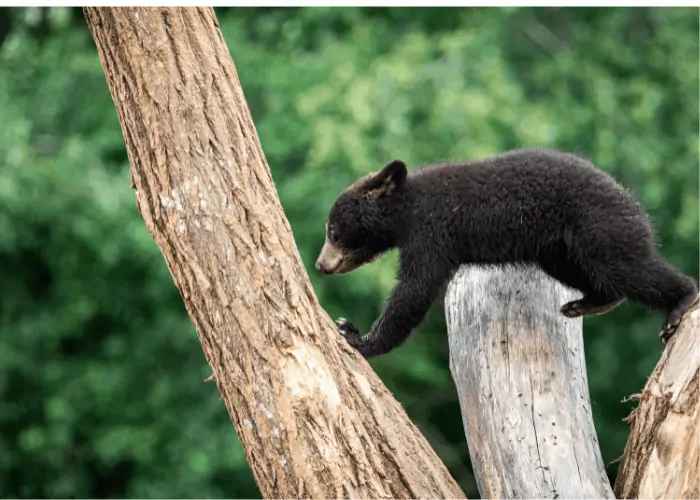
Almost every bear species is excellent at climbing trees, except larger bear species like the grizzly or polar bear.
The American black bear is one of the fastest tree climbers of any species of bear, climbing the tallest trees with relative ease.
Brown bears are also great at tree climbing, though not quite on the same level as black bears.
Other species of bear that can climb trees well include the sun bear (native to Asia), the sloth bear (native to India), the bespectacled bear (native to South America), the Asian black bear (from China and Russia), and the panda bear (from China).
And if you’re wondering about koala bears, don’t be. They’re not born at all! They’re marsupials, not mammals!
( But what about dogs? Are bears related to dogs? )
Koalas may be one of the best tree climbers around, spending a good chunk of their lives in the treetops, but this doesn’t mean they’re related to other species of bear.
How Do Bears Climb Trees?

It may seem strange that such a large animal could lift itself into the branches of trees and keep climbing higher.
Despite their size, bears have evolved a few useful tools and techniques that allow them to be such good tree climbers.
One of these evolutionary traits is their curved claws.
Long curved claws are essential for allowing bears to hold on tight when in a tree and also help them to latch onto branches to pull themselves higher.
Some species of bear have claws more suited to climbing than others. For example, the American black bear has two-inch-long, curved claws, allowing them to climb up trees without worrying about falling quickly.
Other bears, like the grizzly, may have larger claws, but they are not shaped in a way that helps them climb as well as species like the black bear.
Why Do Bears Climb Trees?
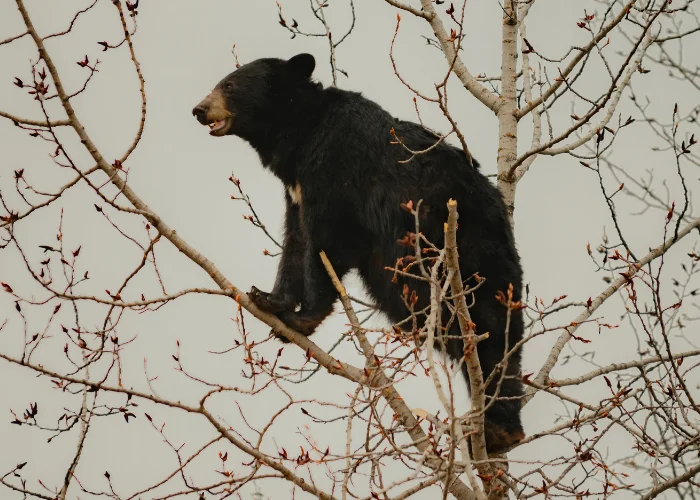
Even though most bears can easily climb trees, they do not typically do this often.
In most circumstances, bears will only climb trees for a specific reason, and that’s usually not to chase prey while hunting.
A bear will typically only climb a tree if they’re foraging for food (like honey or fruit) or if they’re running away from another predator.
Bears love honey, and they will climb the tallest trees searching for this sweet nectar.
They may even go so far as to knock down a beehive and risk angering an entire hive of bees. They typically don’t mind the stings, though, as the sweet taste of honey is worth the pain.
RELATED ARTICLES:
Bears may also climb trees to avoid danger. This could be any number of things, from predators like packs of wolves or other bears to natural disasters like wildfires.
Once a bear decides to climb up a tree, it can stay up there for a long time and has even been known to take naps in them. Bears are okay with waiting in a tree until the danger has passed.
How Fast Can Bears Climb Trees?
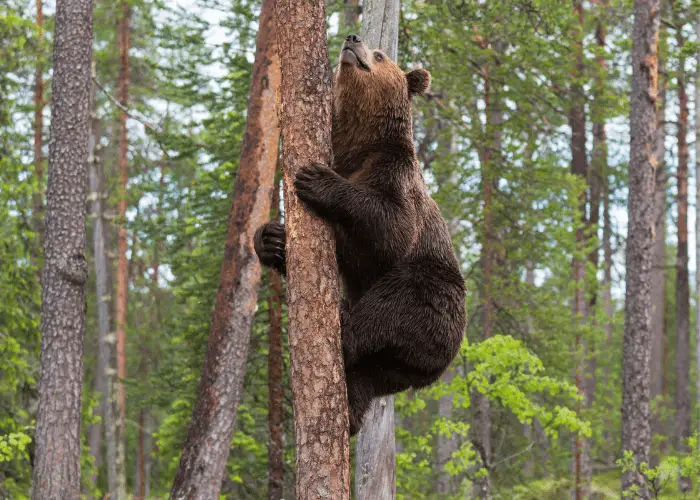
So now that we know bears definitely can and will climb trees, just how fast can they climb?
The speed at which bears climb trees will vary depending on the species.
For example, smaller species like the black and brown bear, who are more suited to tree climbing, can climb trees at speeds of up to 100 feet per 30 seconds.
Other larger and more clumsy species, like the grizzly bear or polar bear, will climb much more slowly than that, if at all. In some cases, grizzlies can’t climb trees unless the branches are evenly spaced out at just the right distance from each other.
Similarly, polar bears don’t typically live around many trees and may not know what to do when climbing one. Their bodies are larger, and their claws are less suited to climbing and instead are better suited to tearing flesh.
Final Thoughts
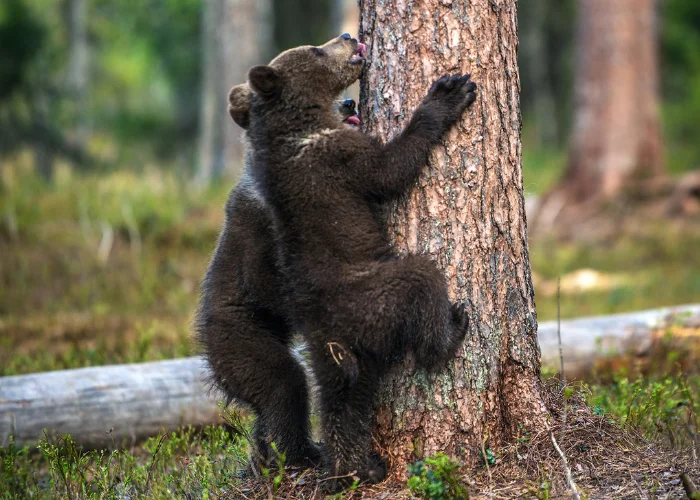
As large and slow as some bears may seem, they can be surprisingly quick and agile.
This even applies to their ability to climb; most bear species can climb trees quite easily.
Some species are better at tree climbing than others, such as the American black bear, which can climb trees at speeds of up to 100 feet for 30 seconds.
Larger species of bear, like grizzly bears and polar bears, are not as suited to tree climbing and may have some difficulty doing so. There are several reasons for this.
One is that their claw shape is not as suited for climbing. Another is that their sheer body mass makes it difficult to climb between clustered branches.
We hope the information we’ve outlined for you above has answered all your questions about whether or not bears can climb trees.
MUST-READ ARTICLE BELOW:

